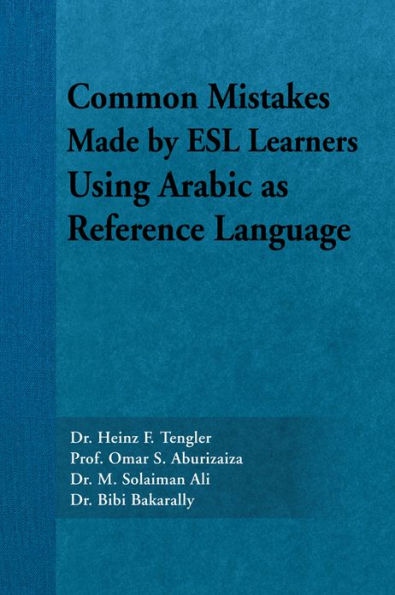Common Mistakes Made by ESL Learners Using Arabic as Reference Language
Purpose and Scope: This text has been produced to alert learners of English using Arabic as L1 to the most typical problem areas that tend to hinder their progress as they endeavor to overcome native language interference in the process of growing into the target language. The functions of capitalization and syntax have received special emphasis. The analytical perspective takes precedence over its pedagogical counterpart. Learner Focus: The primary readership is expected to grow beyond Arabic speakers per se and is most likely to include learners using Farsi, Urdu, or Turkish as L1. In addition, even a broad spectrum of learners using reference languages with various different alphabets (e.g. Bengali, Hangul, Hebrew, Hindi, Japanese, Mandarin) will find the text useful to a considerable extent. Appendices: The exercises included in the three appendices are ambitiously written and intended to reveal to the learner the formidable amount of lexical material that will have to be internalized on the road to solid proficiency. ESL instructors teaching Arabic speakers are aware of the difficult and time-consuming effort involved in the acquisition of vocabulary.
1114378441
Common Mistakes Made by ESL Learners Using Arabic as Reference Language
Purpose and Scope: This text has been produced to alert learners of English using Arabic as L1 to the most typical problem areas that tend to hinder their progress as they endeavor to overcome native language interference in the process of growing into the target language. The functions of capitalization and syntax have received special emphasis. The analytical perspective takes precedence over its pedagogical counterpart. Learner Focus: The primary readership is expected to grow beyond Arabic speakers per se and is most likely to include learners using Farsi, Urdu, or Turkish as L1. In addition, even a broad spectrum of learners using reference languages with various different alphabets (e.g. Bengali, Hangul, Hebrew, Hindi, Japanese, Mandarin) will find the text useful to a considerable extent. Appendices: The exercises included in the three appendices are ambitiously written and intended to reveal to the learner the formidable amount of lexical material that will have to be internalized on the road to solid proficiency. ESL instructors teaching Arabic speakers are aware of the difficult and time-consuming effort involved in the acquisition of vocabulary.
3.99
In Stock
5
1

Common Mistakes Made by ESL Learners Using Arabic as Reference Language

Common Mistakes Made by ESL Learners Using Arabic as Reference Language
3.99
In Stock

Product Details
| ISBN-13: | 9781481704595 |
|---|---|
| Publisher: | AuthorHouse |
| Publication date: | 02/06/2013 |
| Sold by: | Barnes & Noble |
| Format: | eBook |
| File size: | 419 KB |
From the B&N Reads Blog
